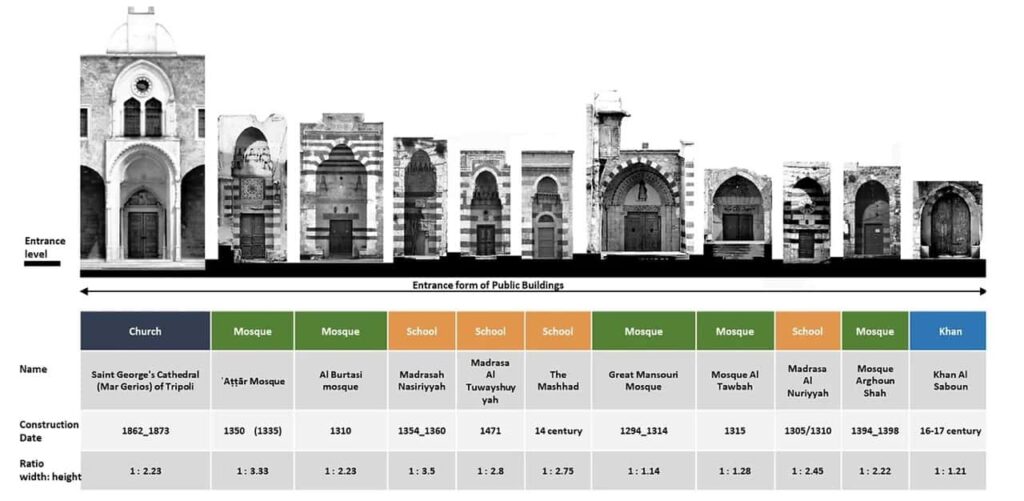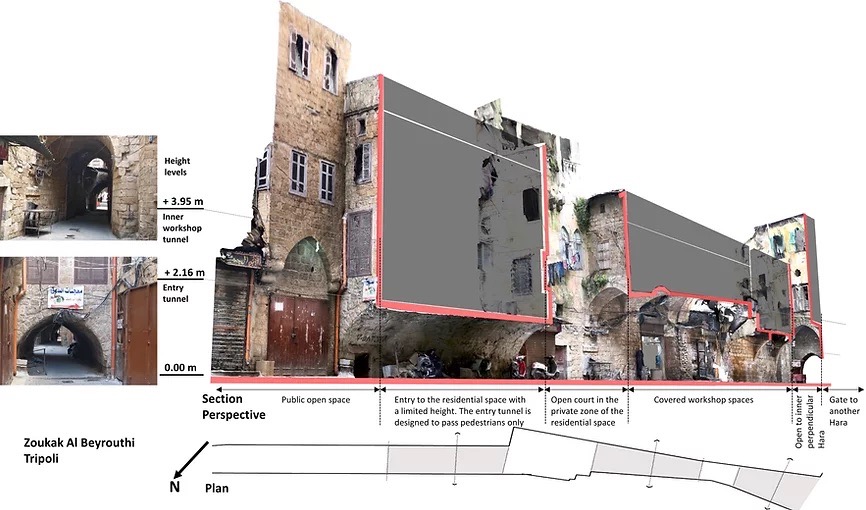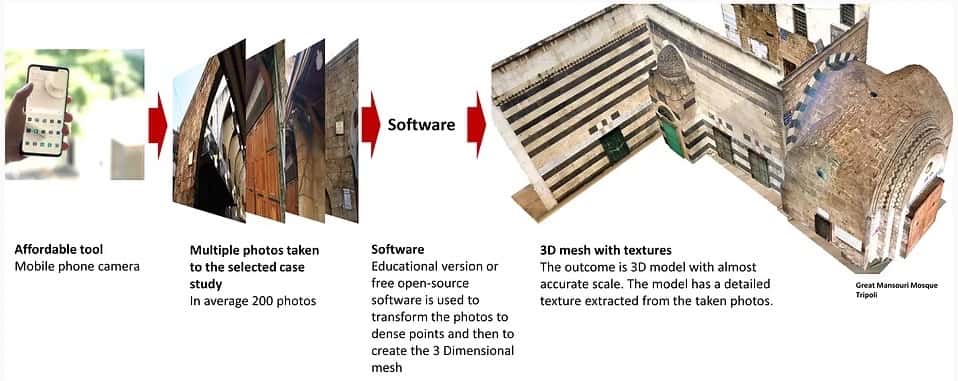

This project aims to document, previously undocumented, key architectural elements and subsequently raise awareness among academics, public and Lebanese authorities about the values of old buildings’ detailed features. This is in consideration of digital approaches that reflect the current interactive methods, which proved popularity and usefulness. The focus is on architectural elements of public historic buildings in use that link the indoor spaces with outdoor public activities, and represent a tangible heritage, where the users have their first visual interaction with; particularly doors, gates, and entrances of mosques, churches and khans.
This project also aims to highlight the importance of the intangible heritage underpinning such tangible patrimony by reviving traditional crafts related to the manufacture/repair of historic buildings’ entrances, which would financially benefit local craftsmen.
You can explore some of Nabil’s photogrammetry work undertaken during the Fellowship programme on his website here:
About the Project
In addition to recent conflict and disasters, two topical events have stressed the critical need for digital heritage documentation: the devastating fire at Notre-Dame de Paris, France, in 2019 and the colossal explosion in 2020 at Beirut port, Lebanon, which caused extensive damage to a huge number of, mainly historical buildings. The former was well documented by various digital techniques which facilitated the restoration and preservation of the iconic monument, while the latter was not fully documented, which makes preserving the damaged heritage more challenging.
This project aims to:
- Document, previously undocumented, key architectural elements and subsequently raise awareness among academics, public and Lebanese authorities about the values of old buildings’ detailed features. This is in consideration of digital approaches that reflect the current interactive methods, which proved popularity and usefulness. The focus is on architectural elements of public historic buildings in use that link the indoor spaces with outdoor public activities, and represent a tangible heritage, where the users have their first visual interaction with; particularly doors, gates, and entrances of mosques, churches and khans;
- Highlight the importance of the intangible heritage underpinning such tangible patrimony by reviving traditional crafts related to the manufacture/repair of historic buildings’ entrances, which would financially benefit local craftsmen.
Project Team


Dr Nick Webb

Dr Ataa Alsalloum
Status
Completed 2021
Project Activities
- Interviews
- Photogrammetry
Outcomes & Outputs
- Project website
- Talks
Locations
Liverpool, UK
Tripoli, Lebanon
Cairo, Egypt
Partners
Beirut Arab University in Lebanon
Funders
The University of Liverpool Fellowship Programme




